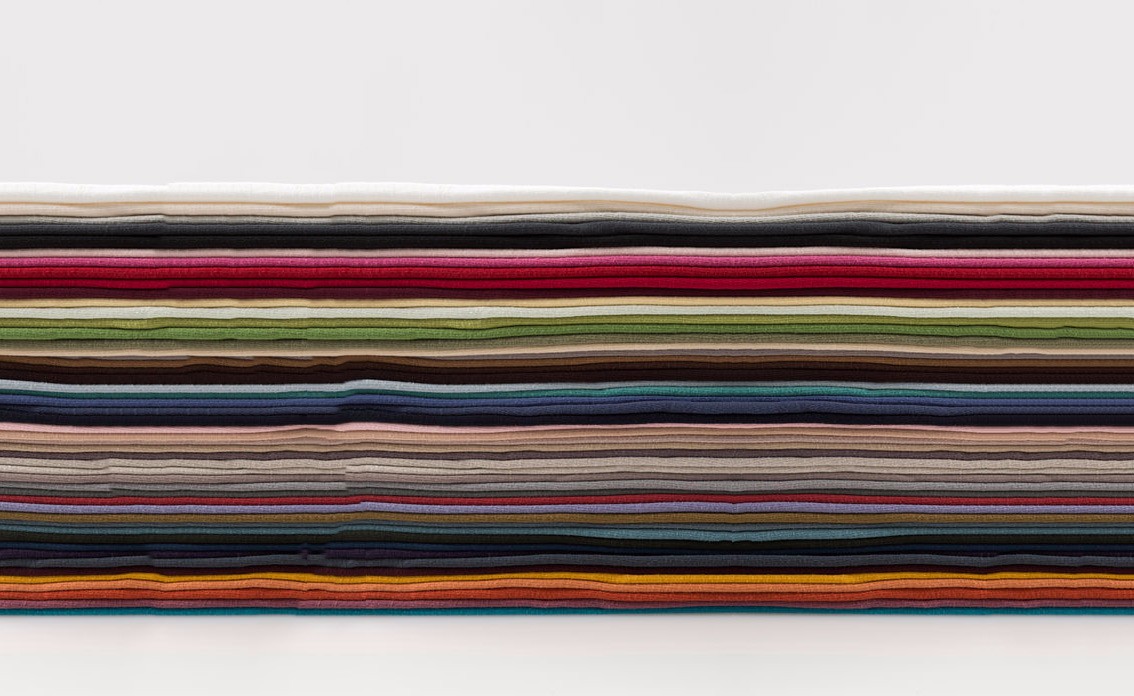Trying to make sense of textile industry lingo can often feel like a minefield but equally staying informed is key in helping you make the right decision based on your customer and design needs when choosing blank garments for screen printing. That’s why we’ve created this handy glossary of what we think are the top 15 t-shirt terms you need to know.
Burnout
A fabric effect created when mixed fibre material undergoes a chemical process to dissolve the cellulose fibres and create a semi-transparent pattern against more solidly woven fabric.
Combed Cotton
A process used to filter and sieve out shorter fibres and remove impurities. The result is a softer garment and smoother printing surface.
Garment Dyed
As the name suggests this is when the finished garment is dyed instead of the cloth. The process helps to prevent shrinkage and often results in a softer feel and richer colour.

Garment Washed
A wash process where softeners are added to the finished garment to help the cotton relax. This also results in a thicker appearance and reduced chance of shrinkage.
Loose Knit
A lighter more breathable jersey perfect for summer t-shirts.
Marl
An effect created when 2 different coloured yarns are combined in the thread used to construct the fabric.
Poly-Cotton
Fabric made from a mixture of cotton and polyester fibres which is popular because the blend makes it both breathable and durable.
Raglan
A sleeve style that connects to the neck of the garment without a shoulder seam.
Raw Edge Jersey
Hems, sleeves and necklines with a cut rather than folded finish to them for a deconstructed feel.
Ring Spun Cotton
A smoother and longer yarn compared to its open end alternative. The spinning process for this fabric also straightens each fibre resulting in fewer impurities and much softer finish.
Side Seams
Having these on a t-shirts creates a tailored structure and better fit than the tubular alternative. As more sewing is involved in the construction of these garments they’re usually more expensive too.

Single Jersey
A single layer of jersey knitted with one set of needles on a single needle bed of a weft knitting machine. Used for wool, cotton and synthetic fibres it delivers a lightweight and stretchy result.
Slub
A fabric finish which contains slight lumps and imperfections created by knotting/twisting the fibres as they’re spun or by weaving fibres of uneven width. The overall effect is a rough and uneven texture with a vintage feel.
Tri-Blend
A 50% polyester/25% cotton/25% rayon construction fabric. It is popular for its durability and ability to retain its elasticity although it’s not always suited to screen printing.
Weight
Weight per square metre of fabric is usually listed as the GSM for metric or ounces per yard squared for imperial measurements. If you want a thick t-shirt then a 180-200gsm item is generally at the top end but if you want a nice lightweight summer t-shirt then 130-150gsm is also great. Likewise if you are looking for a cheap promotional t-shirt that may not be worn more than a few times 100-110gsm can be adequate.



